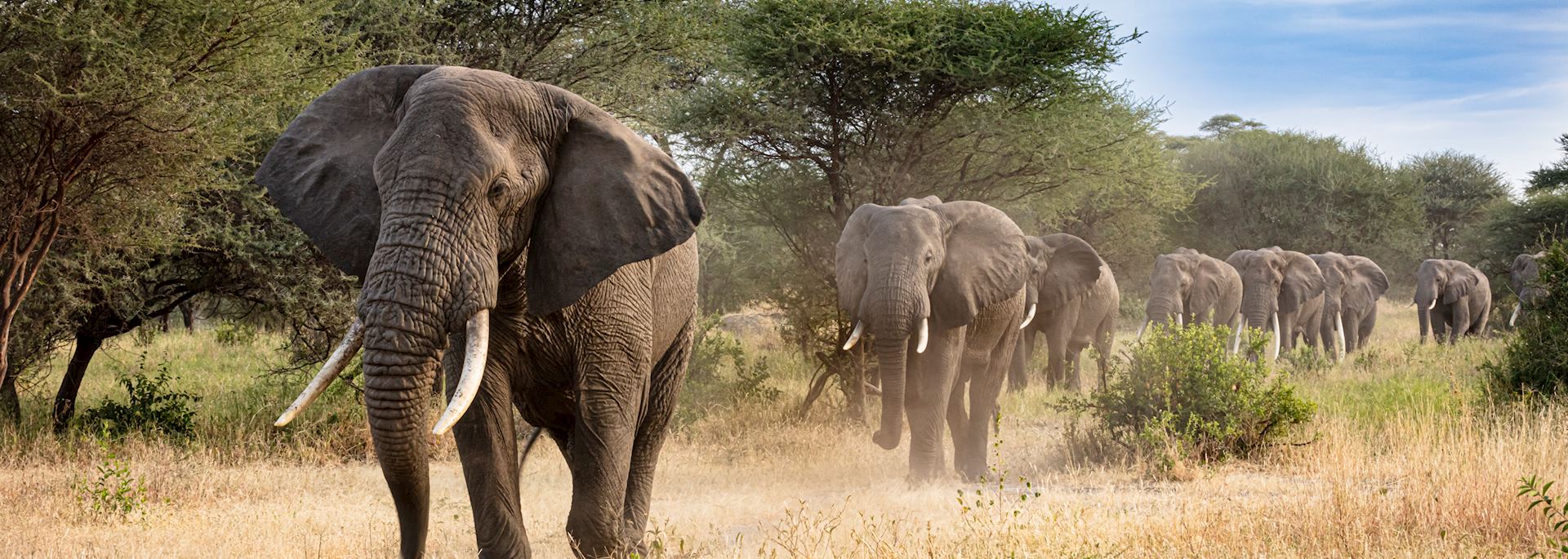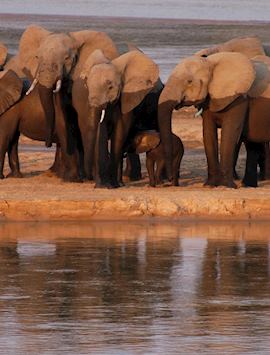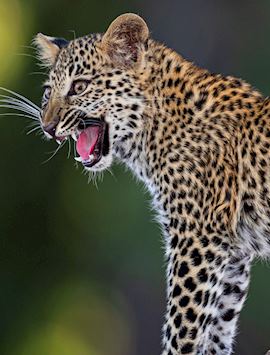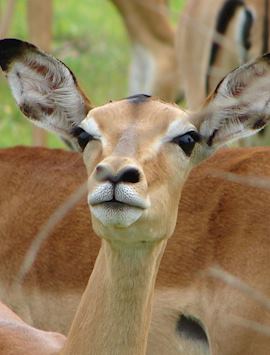Zambia is the home of the walking safari and its prolific wildlife is especially exhilarating when encountered on foot.
Elephant, lion, wild dog, spotted hyena, giraffe and puku are just some of the game you may see. Once you’ve approached a hundred-strong herd of buffalo on foot, game viewing from a vehicle may never provide quite the same thrill.
With a walking safari you also get a completely different perspective and learn to appreciate many of the smaller things not easily viewable from a vehicle.
Start planning your walking safari in Zambia
Start thinking about your experience. These itineraries are simply suggestions for how you could enjoy some of the same experiences as our specialists. They're just for inspiration, because your trip will be created around your particular tastes.
View All Tours in ZambiaTypes of walking safaris in Zambia
There are two ways to enjoy walking safaris — either on morning and afternoon rambles out and back to the same camp or on a three- or four-day dedicated walking trail.
Type 1: Morning and afternoon walks
Every day, you will be taken on lengthy morning and afternoon walks with your guide and scout. Enjoy informative walks through the Zambian bush at a leisurely pace that can be as long or as short as you want, depending on what you find.
Discover fascinating things about large and small species alike, understand medicinal uses for various plants and at the end of the day enjoy sundowner drinks while admiring a wonderful African sunset.
Type 2: Dedicated walking trails
One of our favourite places to start a three-day walking trail is Tafika Camp. On a typical trail, you would set out from Tafika for a morning’s walk through a pristine wilderness area to the first camp, Crocodile Camp, only accessible on foot.
A day or so can be spent at Crocodile before taking a morning walk to Chikoko Bush Camp. After a couple of nights at Chikoko, you can then enjoy a walk back to Tafika. The beauty of this trail is that it can be tailored to your interests and pace, whether you enjoy long or short walks, or a mixture of both.
The camps are delightful, with simple reed and thatch chalets and hot bucket showers. You will dine under sausage trees, shower under the stars and sit around campfires.
Recommended National Parks in Zambia
Zambia has a number of national parks that are ideally suited to walking safaris.
We can arrange tailor-made walking itineraries to any of these places. To see what is possible, visit our itinerary ideas page.
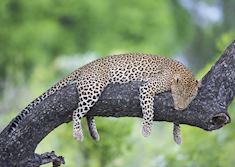
South Luangwa National Park
South Luangwa National Park is Zambia's most famous safari park. Most of the game viewing, of which there is plenty, is centred around the Luangwa River. Walking safaris are a speciality in the park.
North Luangwa National Park
With virtually no roads, the North Luangwa is perfect walking country. Game gravitates toward the river, particularly in the dry season, when it’s common to see buffalo, lion and hyena in healthy numbers.
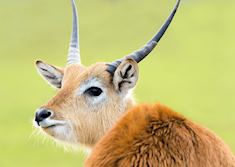
The Kafue National Park
Kafue National Park is huge (22,000 sq km) and so it's a place we recommend staying a few days. Here you can enjoy walking safaris, canoe trips, game drives and night drives.
Recommended accommodation in South Luangwa National Park
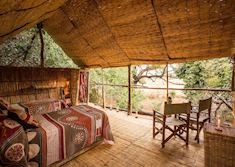
Chikoko
South Luangwa National Park
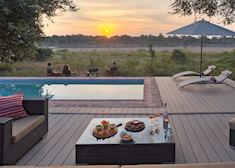
Flatdogs Camp
South Luangwa National Park
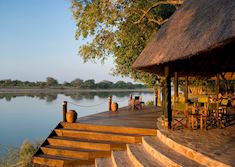
Nkwali Camp
South Luangwa National Park
Frequently asked questions
While walking safaris share some obvious similarities to game drives, there are nevertheless significant differences which you need to be aware of.
Here we provide answers to some of the most commonly asked questions.
1. Which are the best places to go?
Walking safaris are particularly good in the following national parks in Zambia: South Luangwa, North Luangwa, Lower Zambezi and Kafue National Park.
2. What should I expect?
You will find the pace of your walk is relaxed and that you are often stopping off to look at something, listen to the sounds of the bush and really experience the wildness of Africa.
It's not about looking for big game on foot (although you may encounter some) but more about the small things: animal tracks on the ground, spoor, plants, birdlife and insects.
3. What should I wear?
Footwear
Good closed-toe walking shoes or trainers are perfectly adequate for the majority of walking safaris. The most important consideration is being comfortable. Traditional walking boots can be too hot in Zambia, especially if you are there toward the end of the dry season, so it's preferable to invest in desert boots instead.
Clothing
Wear light cotton clothing in "safari" colours of beige, brown, green or khaki. Cotton trousers and shirt/t-shirt is the best option, but shorts are also fine.
4. What should I take with me?
- A high factor sunscreen, as you will be out in the sun for a period of time
- Insect repellent
- A sunhat and sunglasses
- A camera and a light (but good quality) pair of binoculars
5. Do I need to carry my own food and drinks?
The lodge or camp will provide you with water, hot and cold drinks and snacks on the walk.
6. Do I need to be fit?
You don't need to be of a high level of fitness to enjoy walking safaris since the pace is relaxed. However, it's important to make sure you drink plenty of water to keep hydrated as well as protect your skin from the sun with sunscreen and a sunhat or cap.
7. Are walking safaris safe?
On a walking safari you will encounter wild animals and there is an element of unpredictability and risk involved. It is crucial to listen to your safari guide and always follow their advice in any situation on a walk.
8. Is there an age limit?
Children under 14 years old are not allowed on walking safaris. On some longer walking itineraries there may be an age limit of 16 or above; please ask your specialist for advice on this.
